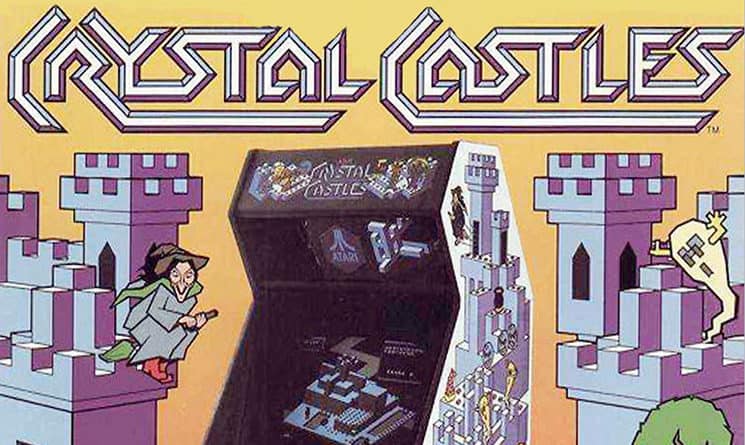“CRYSTAL CASTLES” (Atari, 1983)
The neighborhood arcade, once as ubiquitous in Anytown, U.S.A. as Burger Chef and Montgomery Ward, has all but vanished from the landscape (assuming your landscape isn’t Weirs Beach). But from pinball’s heyday in the 1970s to the North American launch of the Nintendo Entertainment System in 1985, Atari entertained gamers at home while they joined companies such as Gottlieb, Namco, and Midway in engaging gamers at the arcade. Three years after the debut of “Pac-Man,” Atari premiered one of the strangest games to hit arcades — and for a scene with games featuring both competitive alien bartending and medieval ostrich fighting, this is a significant claim. That game is “Crystal Castles,” one of the most challenging and most rewarding of the early arcade era.
“Crystal Castles” programmer Franz X. Lanzinger and project leader Scott Fuller wanted to design an arcade game with fantasy elements and cutting-edge graphics. Bentley Bear, like many ursine pop-culture protagonists, has a taste for honey. He also has a taste for shiny gemstones. Bentley’s mission, if your tokens choose to accept it, is to collect the thousands of gemstones that line the paths of the 37 castle levels before the monstrous gem-eaters do. Bentley must also avoid Berthilda the witch, walking trees, and never-ending swarms of honey-guarding bees that roam the castle walls, which are designed on a slanted 3-D grid.
“Zaxxon” and “Q*bert,” both released a year earlier, introduced gamers to the idea of a z-axis after years of up-down/left-right adventures. They were two of 1982’s most popular games, but that didn’t stop people from complaining about the difficulty of controlling Q*bert as he moved diagonally from cube to cube. The Atari team behind “Crystal Castles” decided the best way to explore Bentley’s three-dimensional environment was to abandon the clunky joystick and utilize a trackball. Fuller created the Leta chip, which was customized specifically to the trackball used in “Crystal Castles” units. Bentley reacts to the slightest touch of the trackball. In fact, the trackball is so sensitive that it takes several plays for the novice to acclimate to the controls. Slowly rolling the ball makes Bentley walk gingerly around traps and enemies, while a fast spin picks up speed but sacrifices the accuracy of your hoped-for direction. It doesn’t help that, in many levels, sections of each castle aren’t visible, making an already difficult level next to impossible.
It was this difficulty that ultimately did in “Crystal Castles.” Players didn’t want to spend a dollar or more figuring our how to play when the vast majority of arcade games could be picked up by merely watching over a friend’s shoulder. “Crystal Castles” was one of the few arcade games that never made the transition to the Nintendo or Sega systems in the late ’80s, so younger players missed a title that included classical music by Beethoven and Tchaikovsky, an actual ending, and excellent graphics. Atari’s 3-D trackball follow-up, “Marble Madness,” became a huge hit. However, “Crystal Castles” was mostly forgotten, save for a cameo in Disney’s video game-driven film, “Wreck-It Ralph.”
Hidden Gem or Total Junk:
Hidden Gem(stone)

